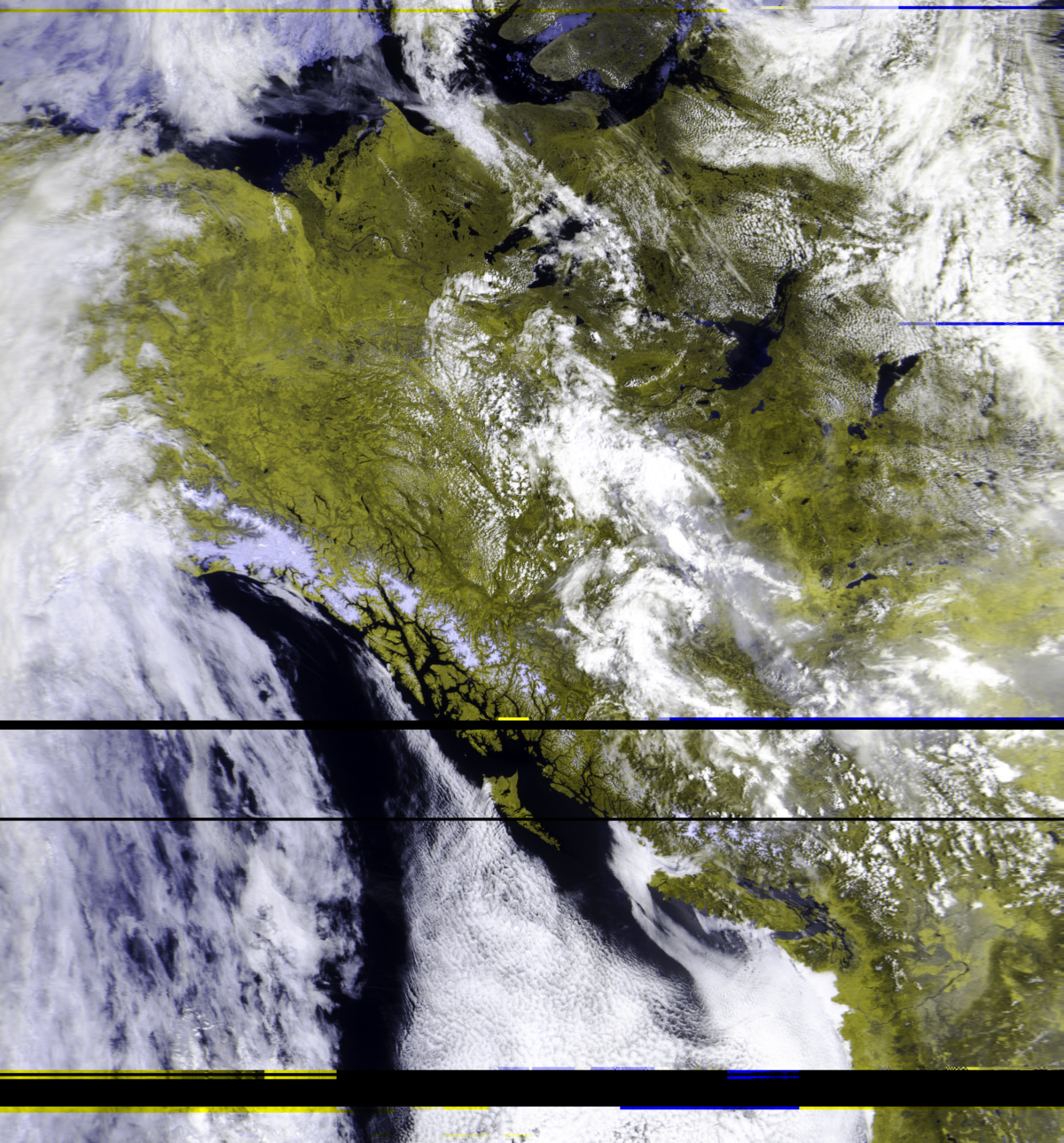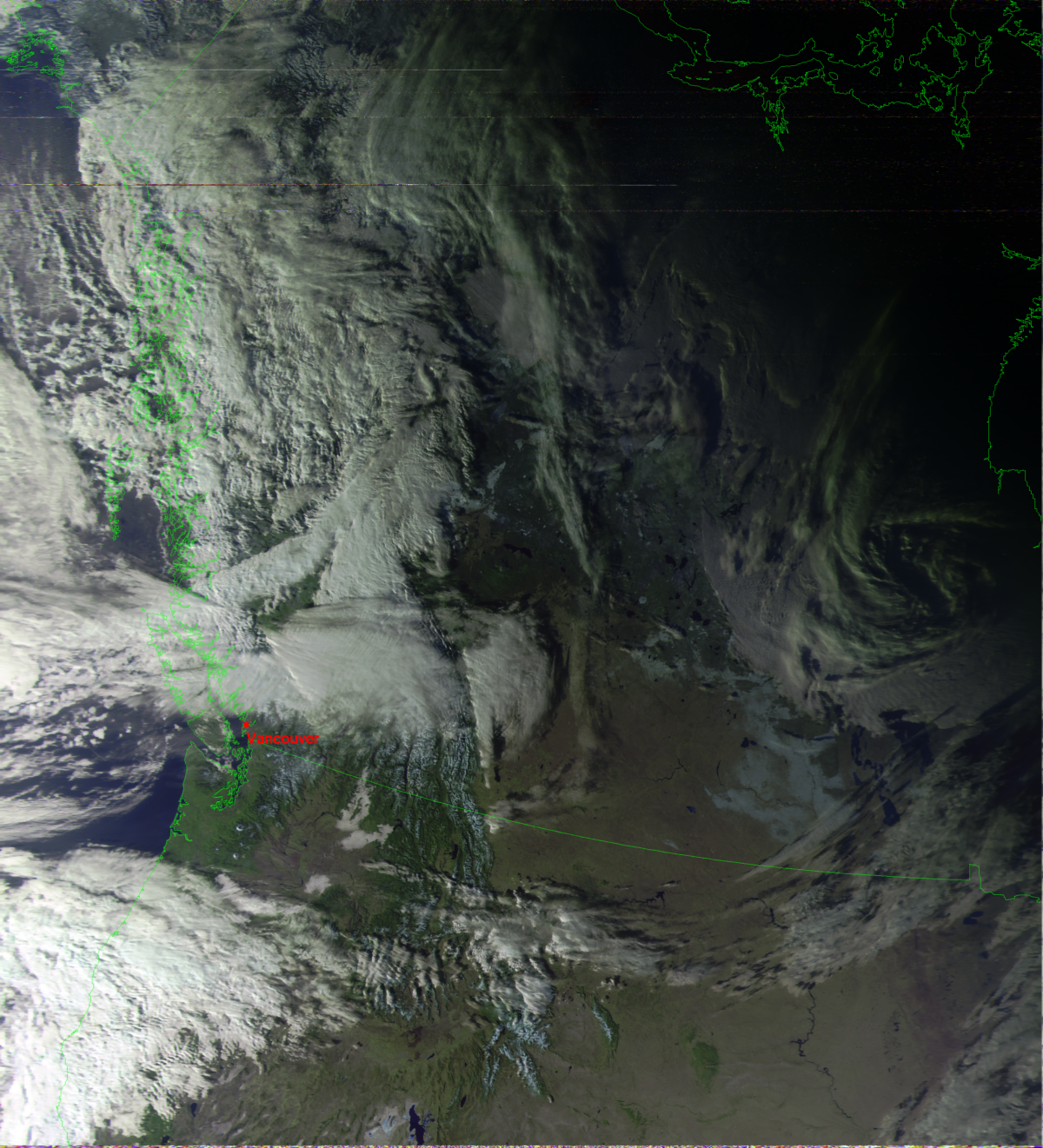RECEIVING WEATHER SATELLITE IMAGERY
March 12, 2024
According to Orbiting Now, there are over 8800 active satellites in orbit around the earth as of November 2023. Most of these satellites are launched for very specific missions, and the data they transmit back to Earth is only able to be received by large companies and organizations. However, some satellites are launched with the ability to be received by radio enthusiasts around the world. Most of these satellites are government weather satellites which provide imagery of Earth as they orbit overhead.
Table of Contents
General Overview
Satellites transmit data by sending radio waves back down to Earth. There are three main parts of equipment needed to receive these radio signals: A radio, an antenna, and decoding software.
The Radio
The radios used to receive signals from satellites are different from radios most people are familiar with. A conventional radio might only be able to tune to specific frequencies within a range, such as different radio stations, by using its physical buttons and knobs. The type of radio I use to receive radio signals is called a Software Defined Radio (SDR). These radios are small devices which can be connected to and controlled by a computer. They typically have no physical buttons or knobs, as everything is controlled by software on the computer. I first started out with the RTL-SDRv3, one of the cheapest yet very capable SDRs on the market. It is capable of listening to frequencies up to 1.766 GHz at a bandwidth* of 2.4 MHz. This radio was enough to get started with low resolution satellite imagery, as they are transmitted at frequencies of around 137.5 MHz.
However, higher resolution satellite imagery is transmitted at frequencies of around 1.7 GHz at 3 MHz of bandwidth. This is at the limit of what the RTL-SDR can handle, so I decided to invest in an Airspy Mini, which is a slightly more expensive SDR that can listen to up to 1.8 GHz at a bandwidth of 6 Mhz. It also has higher quality hardware making it more "sensitive" to weak signals. This radio should meet my needs for the foreseeable future, because even if I want to listen to higher frequencies, I can buy a relatively cheap downconverter, which can convert higher frequencies to lower ones my radio can receive.
* Bandwidth is width of radio spectrum. Radio signals are centered on a specific frequency, but have a finite width, which takes up a range of frequencies above and below the center frequency. A radio must be able to listen to a signal's full bandwidth to properly decode it.

RTL-SDRv3 (top) and Airspy Mini (bottom)
The Antenna
The antenna is the part that converts the invisible radio waves into electrical signals the radio can understand. I'm not an expert on antennas so I won't try to explain how they work, but there are a couple basic concepts that are important: wavelength and polarization.
Radio signals follow the shape of a sine wave. The wavelength of a signal is the distance it takes for the sine wave to complete a full oscillation. Wavelength is inversely proportional to frequency, which means as frequency gets larger, wavelength gets smaller. This length ranges from multiple hundred meters in the kHz to a few centimeters in the GHz. Wavelength is important because the size of the antenna needs to match the size of the wavelength. Lower frequencies have larger wavelengths so need larger antennas, and higher frequencies have smaller wavelengths so need smaller antennas.
Polarization is the geometric orientation of the radio wave. I don't know much about the subject, but it is important to match the polarization of the transmitting and receiving antennas. The signals I received are either linearly polarized, right hand circularly polarized (RHCP), or left hand circularly polarized (LHCP).
The Software
To be continued...
Polar Orbiting Satellites
Low Resolution Imagery
APT and LRPT


High Resolution Imagery
HRPT

Geostationary Satellite Imagery
GOES and HRIT
